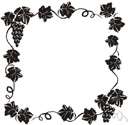vascular plant
Also found in: Thesaurus, Medical, Encyclopedia, Wikipedia.
vascular plant
n.
Any of numerous plants, including the seed plants and the ferns, having well-developed vascular tissues consisting of phloem to transport sucrose and other organic nutrients and xylem to transport water and minerals. Also called tracheophyte.
American Heritage® Dictionary of the English Language, Fifth Edition. Copyright © 2016 by Houghton Mifflin Harcourt Publishing Company. Published by Houghton Mifflin Harcourt Publishing Company. All rights reserved.
ThesaurusAntonymsRelated WordsSynonymsLegend:
Switch to new thesaurus
| Noun | 1. |  vascular plant - green plant having a vascular system: ferns, gymnosperms, angiosperms vascular plant - green plant having a vascular system: ferns, gymnosperms, angiospermsvascular system - the vessels and tissue that carry or circulate fluids such as blood or lymph or sap through the body of an animal or plant nonflowering plant, pteridophyte - plants having vascular tissue and reproducing by spores herb, herbaceous plant - a plant lacking a permanent woody stem; many are flowering garden plants or potherbs; some having medicinal properties; some are pests halophyte - plant growing naturally in very salty soil succulent - a plant adapted to arid conditions and characterized by fleshy water-storing tissues that act as water reservoirs cultivar - a variety of a plant developed from a natural species and maintained under cultivation cultivated plant - plants that are grown for their produce weed - any plant that crowds out cultivated plants duct - a continuous tube formed by a row of elongated cells lacking intervening end walls vascular tissue - tissue that conducts water and nutrients through the plant body in higher plants evergreen, evergreen plant - a plant having foliage that persists and remains green throughout the year deciduous plant - a plant having foliage that is shed annually at the end of the growing season vine - a plant with a weak stem that derives support from climbing, twining, or creeping along a surface creeper - any plant (as ivy or periwinkle) that grows by creeping ligneous plant, woody plant - a plant having hard lignified tissues or woody parts especially stems geophyte - a perennial plant that propagates by underground bulbs or tubers or corms desert plant, xerophile, xerophilous plant, xerophyte, xerophytic plant - plant adapted for life with a limited supply of water; compare hydrophyte and mesophyte mesophyte, mesophytic plant - land plant growing in surroundings having an average supply of water; compare xerophyte and hydrophyte aquatic plant, hydrophyte, hydrophytic plant, water plant - a plant that grows partly or wholly in water whether rooted in the mud, as a lotus, or floating without anchorage, as the water hyacinth tuberous plant - plant growing from a tuber bulbous plant - plant growing from a bulb cormous plant - plant growing from a corm psilophyte - any plant of the order Psilophytales: a savannah plant psilophyton - any plant or fossil of the genus Psilophyton |
Based on WordNet 3.0, Farlex clipart collection. © 2003-2012 Princeton University, Farlex Inc.